Alfred
Stieglitz
History
Stieglitz, AlfredAmerican, 1864-1946
Had Alfred Stieglitz never taken a photograph in his life, he would still be numbered among the most significant influences in American cultural life in the period before the World War II. As editor of the now legendary magazine Camera Work, as proselytizer for the art of photography, and as director of the 291 gallery and, later, The Intimate Gallery and An American Place, Stieglitz was among the first to introduce the art of the European and American avant-garde to the American public while simultaneously championing, publishing, and exhibiting much of the best photography of the period. Nevertheless, it is Stieglitz's body of photographic work which has firmly established his place among 20th c. artists.
Stieglitz's career spanned more than 50 years and bridged 19th- and 20th-c. styles in photography.
He began exhibiting his own work extensively and writing on photography - predominantly on the movement now known as Pictorialism, whose influence pervaded his early work. Pictorialism had originated in France and England (where its major practitioners were loosely organized into a group called The Linked Ring, which conferred honorary membership on Stieglitz). When, in 1902, Stieglitz formed the Photo-Secession group and opened the first of his galleries, the American photographers he exhibited were more or less influenced by Pictorialist tenets. These included the application of Aestheticism and Symbolist styles borrowed from the fine arts, and the use of the gum bichromate and glycerin printing processes, soft focus, and retouching of the negative or positive to achieve painterly or graphic effects. In his own work Stieglitz soon came to reject retouching and other forms of manipulation, often choosing to photograph in rain, mist, or snow to create the desired softness of effect as well as to demonstrate that vision was more important than condition or equipment.
In the same year that he established the Photo-Secession, Stieglitz began publishing the quarterly Camera Work, which continued until 1917 and featured hand-tipped photogravures, criticism, and reproductions of the work of vanguard artists. In 1908, Stieglitz began exhibiting painting and sculpture at his 291 gallery. Exhibitions included the works of Matisse, Cezanne, Rodin, Braque, O'Keeffe (whom he was to marry in 1924), and primitive African artisans.
After the closing of 291 and the termination of Camera Work, Stieglitz opened the Intimate Gallery (1925-1929) and An American Place (1929 until his death in 1946), in which he exhibited principally painting, sculpture, and graphic work, and occasionally photography. His work of this later period includes portraits, hundreds of studies of Georgia O'Keeffe, photographs of Lake George (where Stieglitz summered), clouds, and New York City views.
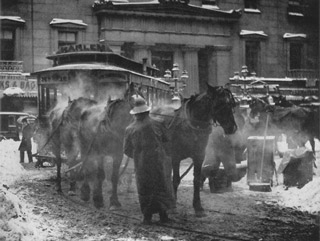
The Terminal, New York
1892
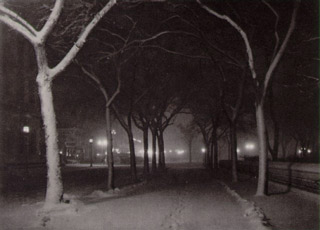
Icy Night
1893
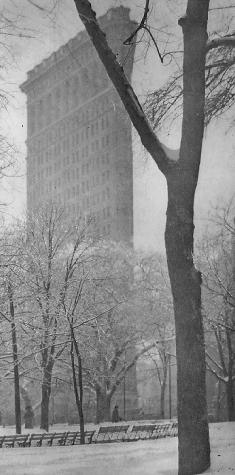
Flatiron Building
1903
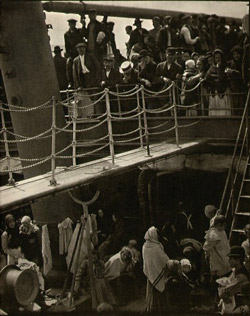
The Steerage
1907
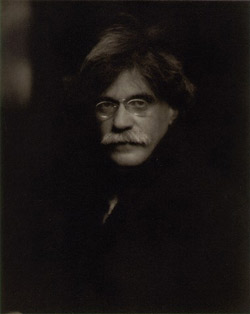
Self-portrait
1907
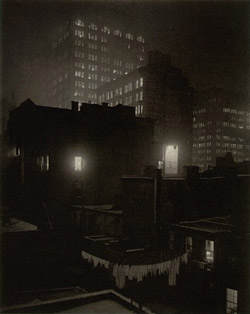
From the Back-Window, "291"
1915